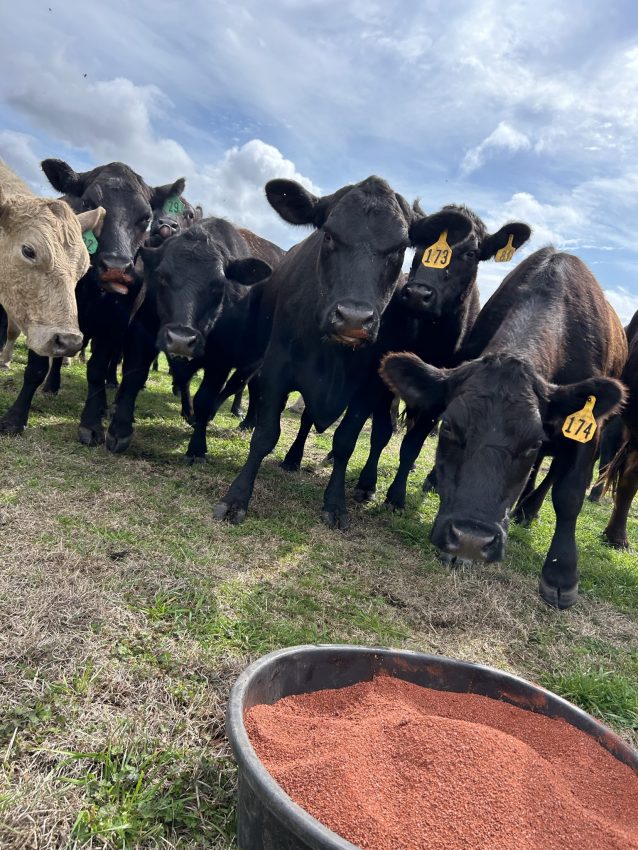Brett Capra, University of Florida, Senior in Animal Sciences & UF/IFAS Extension Intern with Kalyn Waters, UF/IFAS Extension Holmes County
One of the issues that can handicap production in the summer months is the struggle to get cattle to consistently consume minerals during the heat. Keeping minerals balanced in your cattle is essential for keeping up productivity and health in your herd. Reduced growth, milk production, fertility, and overall performance are just some examples of side effects from mineral deficiencies. Therefore, it’s important to have the right tools to encourage consumption in the summer months.
Various problems with cattle health and production can pop up with any mineral deficiency. Some common minerals that are deficient in Florida forages include:
Phosphorus: Vital for growth, milk production, and fertility. Deficiency can weaken bones, decrease weight gain and feed efficiency, and potentially cause milk fever and nervous disorders in lactating animals.
Selenium: Common to be deficient in Florida soils, selenium deficiency can cause white muscle disease in newborn calves and increase newborn calves’ susceptibility to calfhood diseases. Moreover, this deficiency can also decrease reproductive performance and increase rates of retained placentas.
Zinc & Manganese: Both of these minerals are important for the integrity of the skin cells. Zinc is also heavily involved in immune functions, antioxidant enzyme production, and creation of proteins. Thus, cattle that are deficient in these minerals are more susceptible to disease.
Copper: Involved in animal energy production and immunity. Deficiency in this mineral can cause lower white blood cell counts and decreased antibodies. It can also impair fetal development, increased incidence of scours, gastrointestinal ulcers after birth and respiratory problems in newborn calves.
Placement or location of mineral feeders in the summer months can be key to encouraging consumption. Mineral tubs/feeders are a great tool for providing different supplements of minerals to your herd. It’s best to place these near water and/or shade as cattle naturally seek these places which will help encourage consumption of the supplement.
The recommended number of feeders is one for every 30 to 50 cows. Additionally, it is important to have a feeder that can withstand Florida’s weather, especially one that protects the supplement from moisture and rain. Ideally feeders will keep your minerals dry and be easy to transport. If the mineral feeder is not covered, it is best to provide less mineral, more frequently. This will help keep your mineral fresh and prevent damage from the elements like sun and rain.
Additionally, checking the feeders once a week to ensure the supplement is always fresh and available will improve the herd’s consumption. While over consumption of free-choice minerals is not common, over consumption can be dangerous to the health of your cattle. If cattle are starting to over consume, reduce the number of feeders/tubs and distance them further from shade and/or water.
It is always a good idea to track mineral consumption seasonally. While paperwork is never at the top of a ranchers list, keeping simple records and knowing the target consumption rate of your mineral product in comparison to the herd’s actual consumption can be a helpful set in evaluating the effectiveness of the mineral product and program.
–
For more information on nutrition requirements for beef cattle:
Basic Nutrient Requirements of Beef Cows
A Research-Based Summary on Trace Minerals for Cattle
Methods of Trace Mineral Supplementation
- Big Doe Contest Returns for 2025: A Growing Thanksgiving Tradition - November 14, 2025
- UF/IFAS Extension Panhandle Cattlemen’s College Announces Scholarship Opportunity for Florida Youth – Application Deadline September 15 - August 29, 2025
- Foot Rot Prevention and Treatment for Cattle - August 15, 2025

